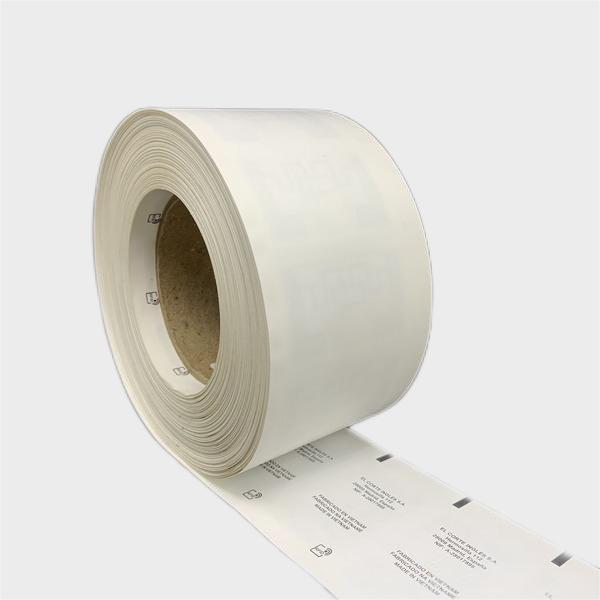
RFID (Radio Frequency Identification) technology is revolutionizing the way businesses manage their inventory, particularly in the footwear industry. RFID labels for shoes are small tags that can be attached to individual pairs of shoes, allowing for easy tracking and management of inventory levels. These labels use radio waves to transmit data to a reader, providing real-time information about the location and status of each pair of shoes. In this article, we will explore the benefits of using RFID labels for shoes in inventory management, as well as the key considerations when implementing an RFID system.
1. The benefits of RFID labels for shoes2. How RFID labels work3. Key considerations for implementing RFID labels for shoes4. Conclusion
The benefits of RFID labels for shoes
RFID labels for shoes offer a number of benefits for businesses in the footwear industry. One of the biggest advantages is improved inventory accuracy. Traditional methods of tracking inventory, such as barcode scanning, can be time-consuming and prone to error. With RFID labels, however, businesses can quickly and easily scan large quantities of shoes at once, providing a more accurate picture of their inventory levels.
In addition to improved accuracy, RFID labels also allow for greater visibility into the supply chain. By attaching RFID labels to individual pairs of shoes, businesses can track the movement of their inventory from the manufacturer to the retailer, and even to the customer. This level of visibility can help businesses identify bottlenecks in their supply chain and make more informed decisions about inventory management.
Another key benefit of RFID labels for shoes is increased efficiency. With traditional inventory management methods, employees often spend hours counting and scanning shoes. With RFID labels, however, these processes can be completed in a fraction of the time, allowing employees to focus on other important tasks.
Finally, RFID labels for shoes can also help businesses reduce costs. By improving inventory accuracy and visibility, businesses can reduce the amount of excess inventory they hold, which can help lower storage costs. In addition, by streamlining inventory management processes, businesses can reduce labor costs and improve overall efficiency.
How RFID labels work
RFID labels for shoes work by using radio waves to transmit data between a tag and a reader. The tag is typically attached to the shoe using adhesive or sewn into the shoe itself. The reader, which can be handheld or mounted on a fixed location, emits a radio signal that activates the tag.
Once activated, the tag transmits data to the reader, including information such as the SKU number, size, and location of the shoe. This data is then sent to a computer system, where it can be analyzed and used for inventory management purposes.
There are three main components of an RFID system: tags, readers, and software. Tags are small, passive devices that are attached to the shoes. Readers are used to scan the tags and transmit data to the computer system. Software is used to analyze the data and provide insights into inventory management.
There are several different types of RFID tags that can be used for shoes, including passive, active, and semi-active tags. Passive tags are the most common and are typically used for tracking inventory. Active tags, on the other hand, have their own power source and can be used for tracking high-value items. Semi-active tags are a hybrid of the two and are used for tracking items in harsh environments.
In addition to the type of tag, businesses also need to consider the frequency of the RFID system. There are three main frequencies: low-frequency (LF), high-frequency (HF), and ultra-high-frequency (UHF). LF systems operate at frequencies between 30 kHz and 300 kHz and are typically used for tracking animals. HF systems operate at frequencies between 3 MHz and 30 MHz and are used for tracking items such as passports and credit cards. UHF systems operate at frequencies between 300 MHz and 3 GHz and are used for tracking items such as vehicles and inventory.
Key considerations for implementing RFID labels for shoes
Implementing an RFID system for shoes is a significant investment, and businesses need to carefully consider a number of factors before making a decision. One of the biggest considerations is cost. RFID systems can be expensive to implement, and businesses need to weigh the potential benefits against the costs.
Another key consideration is accuracy. While RFID systems are generally more accurate than traditional inventory management methods, they are not infallible. Businesses need to ensure that their RFID system is properly calibrated and maintained to ensure the highest level of accuracy.
In addition to cost and accuracy, businesses also need to consider the ease of use of the RFID system. RFID systems can be complex, and employees need to be properly trained to use them effectively. Businesses also need to consider the integration of the RFID system with their existing inventory management processes and software.
Finally, businesses need to consider the scalability of the RFID system. As their inventory levels change, businesses need to be able to easily add or remove tags and readers from the system. This requires a flexible and adaptable RFID system that can grow and change with the business.
Conclusion
RFID labels for shoes offer a number of benefits for businesses in the footwear industry, including improved inventory accuracy, greater visibility into the supply chain, increased efficiency, and reduced costs. However, implementing an RFID system is a significant investment, and businesses need to carefully consider a number of factors before making a decision.
Ultimately, the decision to implement an RFID system for shoes will depend on the specific needs and goals of the business. By carefully considering the benefits and key considerations of RFID labels for shoes, businesses can make an informed decision about whether this technology is right for them.







